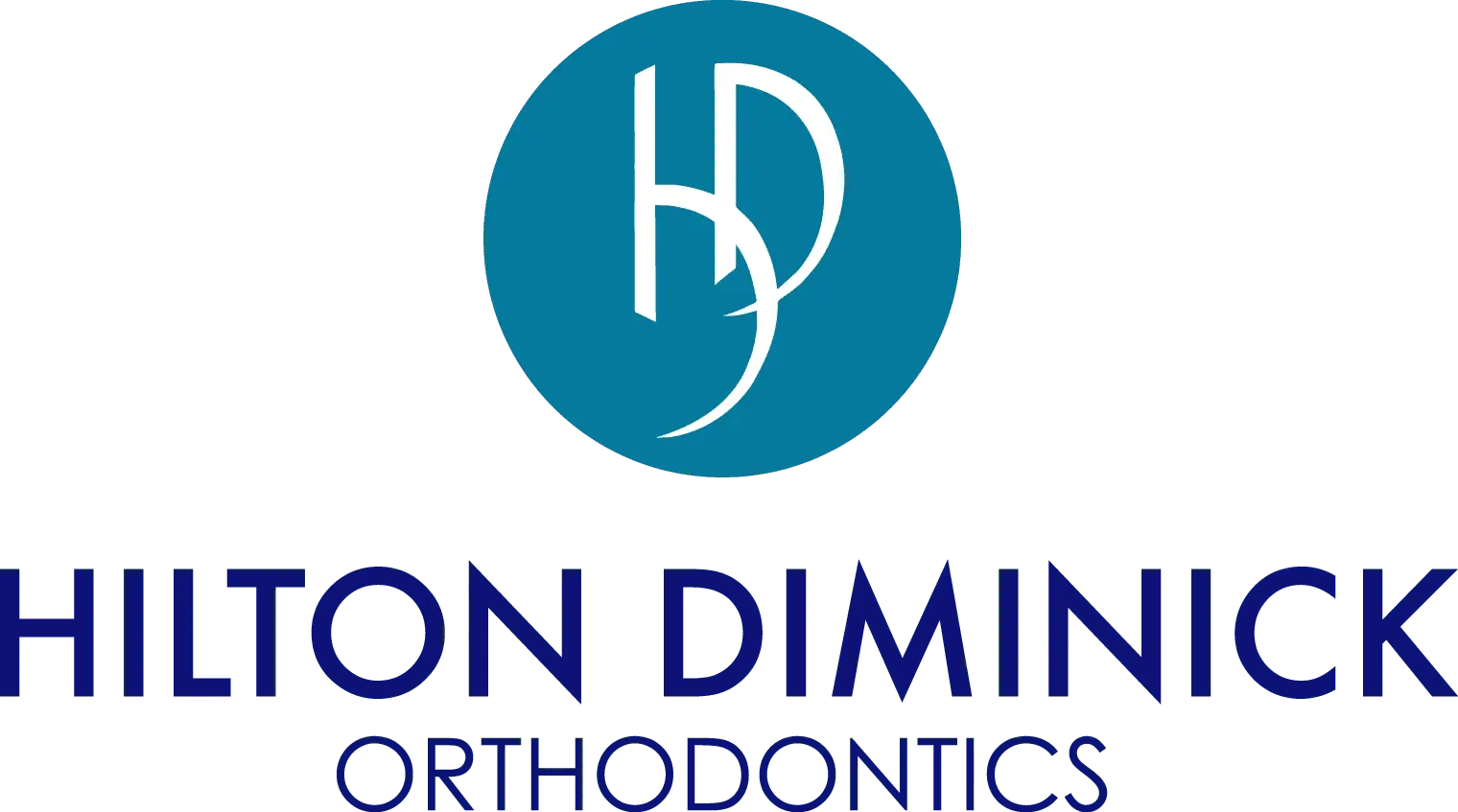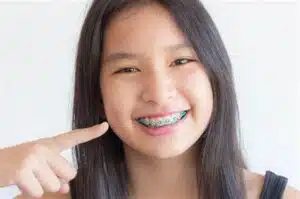
As a parent, making healthcare decisions for your child can be overwhelming, especially when it comes to orthodontic treatment. At HD Orthodontics, we understand the importance of choosing the right treatment option for your child’s unique needs. Two of the most popular orthodontic treatments are traditional braces and Invisalign. But which one is better for your child? Let’s explore both options in detail to help you make an informed decision.
Understanding Traditional Braces
Traditional braces have been the go-to orthodontic treatment for decades, and for good reason. These metal brackets and wires work efficiently to correct various dental issues in children.
Pros of Traditional Braces for Kids
- Effectiveness for Complex Cases: Traditional braces can address severe misalignments and complex orthodontic issues that Invisalign might struggle with.
- No Compliance Issues: Once braces are attached, they’re working 24/7. There’s no risk of your child forgetting to wear them or losing them, which is a common concern with removable aligners.
- Cost-Effective: Generally, traditional braces tend to be more affordable than Invisalign, making them accessible to more families.
- Customization Options: Today’s braces come with colored bands that allow kids to express their personality, making the orthodontic experience more enjoyable.
Cons of Traditional Braces for Kids
- Food Restrictions: Children with braces need to avoid certain foods like popcorn, hard candies, and sticky treats that could damage the brackets or wires.
- Oral Hygiene Challenges: Cleaning around brackets and wires requires extra effort and time, which can be challenging for younger children.
- Discomfort: The initial adjustment period and wire tightening appointments can cause temporary discomfort.
- Appearance Concerns: Some kids may feel self-conscious about the visibility of metal braces.
Understanding Invisalign for Kids
Invisalign has revolutionized orthodontic treatment with its clear, removable aligners. But is it suitable for children? Invisalign’s official research shows promising results for adolescents and teens.
Pros of Invisalign for Kids
- Aesthetic Appeal: The clear aligners are virtually invisible, addressing any concerns about appearance during treatment.
- Comfort: Without metal brackets and wires, Invisalign aligners tend to cause less irritation to the cheeks and gums.
- Easier Oral Hygiene: Removable aligners allow for normal brushing and flossing, making it easier to maintain good oral health during treatment.
- No Dietary Restrictions: Since aligners are removed during meals, there are no food restrictions to worry about.
- Fewer Emergency Visits: Without brackets or wires that can break, Invisalign typically requires fewer emergency appointments.
Cons of Invisalign for Kids
- Responsibility Required: Children need to wear their aligners for 20-22 hours daily and keep track of them when removed. This requires a level of responsibility that not all kids possess.
- Limited Effectiveness for Complex Cases: Certain severe orthodontic issues may require traditional braces for optimal correction.
- Cost: Invisalign treatment is often more expensive than traditional braces.
- Discipline for Oral Hygiene: Children need to brush their teeth after every meal before putting aligners back in to prevent decay.
Age Considerations
Age plays a significant role in determining the most appropriate orthodontic treatment for your child. Our team at HD Orthodontics considers several factors when recommending treatment options.
Early Orthodontic Treatment (Ages 7-10)
For younger children requiring early intervention, traditional braces are often recommended because:
- They provide the orthodontist with precise control for guiding tooth movement and jaw development
- Partial braces may be used to address specific issues before a child’s permanent teeth have fully erupted
- Young children may not have the responsibility level needed for removable aligners
Tweens and Teens (Ages 11-17)
For older children and teenagers, both options can be effective:
- Invisalign Teen comes with compliance indicators to help parents monitor usage
- Many teenagers prefer Invisalign for aesthetic reasons during these socially sensitive years
- The decision often depends on the complexity of the case and the child’s level of responsibility
Case Complexity Matters
The nature and severity of your child’s orthodontic issues significantly influence which treatment option is more suitable:
Ideal Cases for Traditional Braces
- Severe crowding or spacing issues
- Significant bite problems (overbites, underbites, crossbites)
- Need for tooth extraction before alignment
- Rotated teeth requiring precise movements
- Vertical tooth movement cases
Ideal Cases for Invisalign
- Mild to moderate crowding or spacing
- Minor bite issues
- Cases requiring simple tooth movements
- Patients with certain medical conditions like metal allergies
- Situations where playing wind instruments or sports is a priority
According to a study published in the American Journal of Orthodontics & Dentofacial Orthopedics, both treatment modalities can be effective for adolescents when properly indicated.
Lifestyle and Personality Considerations
Your child’s personality, activities, and lifestyle should factor into your decision:
When Braces Might Be Better
- For children who might struggle with keeping track of removable devices
- For kids who may not have the discipline to wear aligners for the required hours
- For families with busy schedules who might find the longer intervals between adjustment appointments convenient
When Invisalign Might Be Better
- For children involved in contact sports (though mouthguards should still be worn)
- For kids who play wind instruments in band
- For teenagers concerned about their appearance during important social events
- For children with sensory issues who might struggle with the feeling of brackets
Treatment Duration and Frequency of Visits
Treatment time varies based on individual needs, but there are general differences:
- Traditional Braces: Treatment typically lasts 18-24 months with adjustment appointments every 4-6 weeks.
- Invisalign: Treatment can range from 12-18 months for compliant patients, with check-ups approximately every 6-8 weeks and aligner changes every 1-2 weeks.
Cost Comparison
While prices vary based on case complexity and location, here’s a general cost comparison:
- Traditional Braces: Generally range from $3,000 to $7,000
- Invisalign: Typically costs between $4,000 and $8,000
Many dental insurance plans cover orthodontics for children under 18, though coverage percentages vary. At HD Orthodontics, we offer flexible payment plans to make either treatment option accessible for families. Contact us to discuss our financing options.
Making the Decision: What Do Experts Recommend?
The truth is that there’s no one-size-fits-all answer. The “better” option depends entirely on your child’s specific needs, case complexity, personality, and preferences.
Our board-certified orthodontists, Dr. Edward Hilton and Dr. Kenneth Diminick, suggest: “The best way to determine the right treatment for your child is through a comprehensive consultation with an experienced orthodontist who is certified in both traditional braces and Invisalign.”
At HD Orthodontics, we believe in a personalized approach. During your child’s initial consultation, we will:
- Perform a thorough examination of your child’s teeth and jaw
- Take digital images and X-rays to assess the underlying structure
- Discuss your child’s lifestyle, habits, and preferences
- Explain the pros and cons of each treatment option based on your child’s specific case
- Answer all your questions and address any concerns
- Present a customized treatment plan with clear cost information
The Importance of Compliance Regardless of Choice
Whichever treatment option you choose, success ultimately depends on compliance:
- With braces, attending regular adjustment appointments and following care instructions is crucial
- With Invisalign, wearing the aligners for the prescribed hours and changing them as directed determines outcomes
Beyond Treatment: What Parents Should Know
Remember that orthodontic treatment is a journey that continues even after the active phase ends. Retention is crucial for maintaining results:
- Both treatment options require retainers after braces come off or the last aligner is worn
- Some children may need fixed retainers, while others use removable ones
- Long-term follow-up ensures that teeth remain in their new positions
Making the Best Choice for Your Child
When deciding between braces and Invisalign for your child, keep in mind that both treatment options have proven track records of successfully straightening teeth and creating beautiful smiles. The “right” choice depends on your child’s specific orthodontic needs, their maturity level, lifestyle considerations, and personal preferences.
At HD Orthodontics, we believe in a personalized approach to treatment. What works wonderfully for one child may not be the ideal solution for another. That’s why our team of experienced orthodontists takes the time to thoroughly evaluate each patient and create a customized treatment plan.
Key factors to consider when making your decision:
- The complexity of your child’s orthodontic case
- Your child’s age and level of responsibility
- Lifestyle factors including sports and activities
- Budget considerations and insurance coverage
- Your child’s preferences regarding appearance during treatment
Our board-certified orthodontists at HD Orthodontics are experienced with both traditional braces and Invisalign treatments for patients of all ages. We’re committed to helping you make an informed decision that will give your child the healthy, confident smile they deserve.
Schedule a Consultation Today
The best way to determine whether braces or Invisalign is right for your child is to schedule a consultation with our experienced team at HD Orthodontics. We’ll evaluate your child’s specific needs and help you make the best decision for their smile.
Don’t wait to give your child the gift of a confident smile! Contact us today to schedule a comprehensive orthodontic evaluation. Our friendly team is ready to answer all your questions about braces or Invisalign treatment options.
Remember, at HD Orthodontics, we’re committed to providing personalized care that considers your child’s unique needs, your family’s lifestyle, and your budget constraints. We look forward to partnering with you on your child’s orthodontic journey!







 Camp Hill, PA
Camp Hill, PA